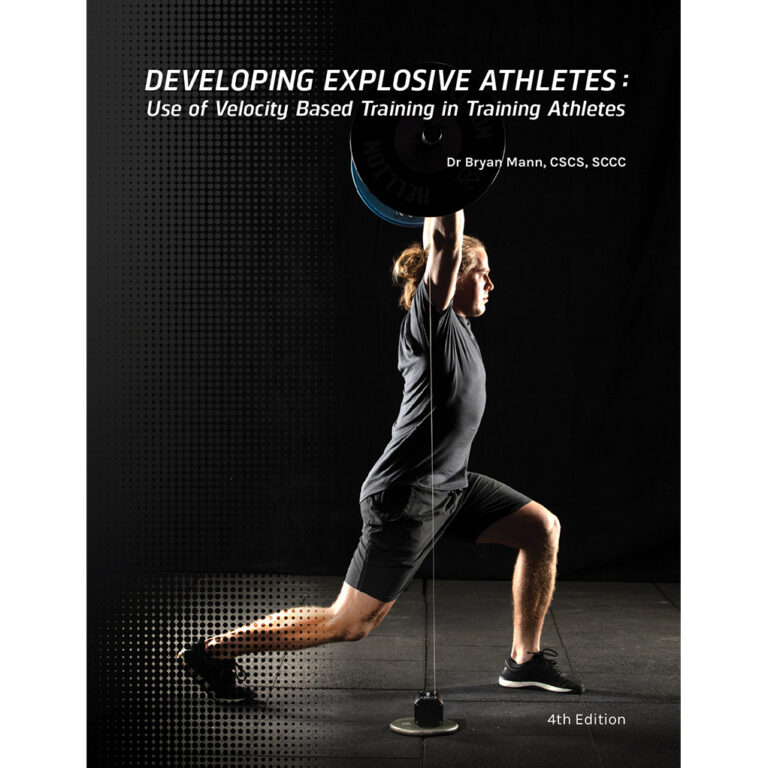STRENGTH SENSEI BOOKSHELF
Developing Explosive Athletes
By Dr. Bryan Mann, CSCS, SCCC
“I feel the need…the need for speed!”
This popular line from Top Gun is also the motivation for the book Developing Explosive Athletes: Use of Velocity Based Training in Training Athletes. In its 4th edition, Dr. Bryan Mann’s book discusses a strength training system that focuses not just on how much weight you lift but how fast you lift it.
One characteristic of Charles R. Poliquin’s programs that set them apart was his use of a 4-digit tempo formula (expanded on from Ian King’s 3-digit formula). This formula tells you how fast to perform the concentric, eccentric, and isometric phases of a lift. This formula gave you the total time-under-tension (TUT) of an exercise, which determined what strength quality is trained. For example, a TUT of less than 20 seconds would focus on relative strength. Mann’s approach uses bar speed (with devices that measure bar movement) during the concentric portion of a lift to determine the strength training effect.


The Strength Sensei divided training goals into four qualities associated with TUT: Relative Strength, Functional Hypertrophy, Hypertrophy, and Strength Endurance. Mann used this classification for strength qualities: Starting Strength, Speed-Strength, Strength-Speed, Accelerative Strength, and Absolute Strength. Each strength quality was associated with a velocity zone. For example, moving a barbell during the concentric phase of a squat slower than 1.3 meters per second would develop absolute strength. Moving it faster than .5m/s would develop starting strength.
With VBT, athletes can precisely monitor their daily weight workouts to ensure they develop the strength quality they want to emphasize. For example, a 100-meter sprinter who wants to focus on their explosion out of the blocks would stay in the Starting Strength velocity zone.
Let’s say our sprinter is performing squats for 5×5. He or she is told by the coach what velocity zone they should be lifting in. After warm-up, if they lift the bar faster than the velocity prescribed for the first set, they would increase the weight for the next set. If they lift slower, they would decrease the weight. (For those familiar with the Strength Sensei’s work, compare it with the critical drop-off point he used in his workouts to monitor training quality.)
This 4th edition of Developing Explosive Athletes was published in 2021 with Steve Gunn as the editor. Supporting his ideas with peer-reviewed research, Mann details his VBT system thoroughly without overwhelming the reader with technical jargon.
“That which is measured improves. That which is measured and reported improves exponentially.” This quote is credited to Karl Pearson and could be considered the premise behind velocity-based training (VBT). So, if you feel the need for speed, Developing Explosive Athletes is a great starting point to explore this unique training system. (TSS)
[You can purchase Developing Explosive Athletes: Use of Velocity Base Training in Training Athletes: 4th Edition by Dr. Bryan Mann, CSCS, SCCC, through Amazon.com.]
